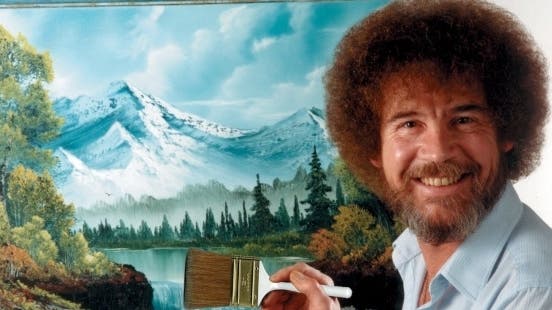Someone should make a game about: Bob Ross
Beat the devil out of it.
Leaves crackle under foot, and beams of light stream down from the canopy above as we amble towards another one of his favourite spots. Mud squelches and sighs, birdsong ribbons with the breeze, (Titanium) white clouds glance off the creek. We veer off track, and weave our way through the brush. Crouching, he comes to a halt in front of some bramble and I pull up beside him.
Gently, he places one hand on my shoulder and carefully peels the branches apart with the other. "Shoot, would you look at that rascal." he says, as Peapod the Squirrel's head pokes out from his shirt pocket. "That happy little mountain over there."
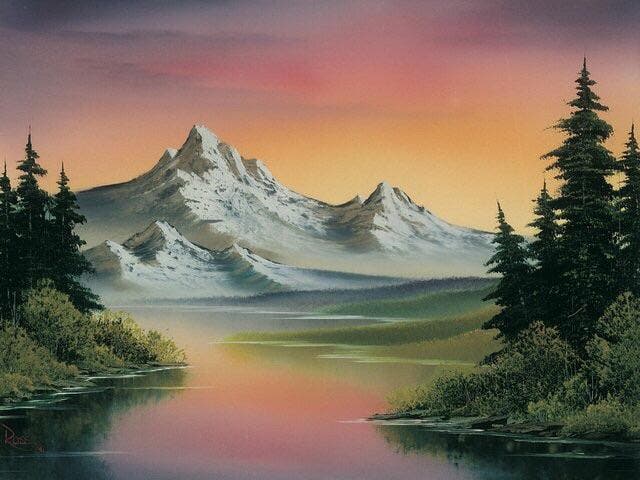
Whenever I stick on Bob Ross, it feels like I've scraped the mud off my boots, hung up my coat and stepped into his quaint log cabin nestled in the woods. We're going to relax and paint what we've just seen, perhaps have a glass of red and some stew afterwards. No matter who you are, what your situation, he's just happy to share your company and it's this, I think, which makes him special.
Originally aired from 1983 to 1994, Bob Ross' The Joy of Painting guides viewers through a painting in a half hour burst made possible using a unique, easy-to-apply technique. The show came to a close many years ago, and yet Ross' following has exploded.
Online streaming kick-started this resurgence. In 2015, Twitch hosted a nine-day Bob Ross marathon which introduced him to a new generation (it also helped cement the ASMR genre). The response was staggering, so much so, Netflix scrambled to add his show to its roster, and not long after, his family set up a YouTube channel which earned over one million subscribers in just one year. Despite no new show in over twenty years, he's back in the limelight spreading joy, a fresh wind piercing through a dense smog of influencers.
Like so many others, I fell for Bob. They say love at first sight is when two eyes meet and there's a magnetic pull, an inexplicable force drawing you closer together. Think this, but my eyes rolling up the deep trench in his pale blue shirt, tickling his beard, softening on his smile, swimming in his eyes, and zooming out to take in his perfectly spherical hair. The confident wield of the palette, the neat tuck where shirt folds into jean, heaven.
Then we paint, and the senses prickle. There's the muted thump, thump, thump, like the tapping of a mic, as Bob deftly reapplies some colour to the brush. I relish the way he cleans it by striking it against the easel with a loud rattle, "to beat the Devil out of it", and the mischievous grin which spreads across his face every time. Don't get me started on the quick scrapes of his painting knives as he mixes hues. Bliss.
His voice! "Huuwisper light" as he'd say, and I couldn't imagine a more perfect fit. It's almost as if it's finely tuned for the quiet life, massaged over years spent in the Alaskan countryside into a mellow rumble so soft it would be overwhelmed by the thrum of a city.
Well, I lost myself there. It's easy to, when you're talking Bob, and one suspects his demeanor is both a blessing and a curse. We foster such a fondness for his mannerisms, and his style, and his voice, his 'Bob Rossness', we might not take him seriously enough sometimes. I imagine he'd hate me saying this, but we mustn't forget how skilful an artist he actually is.
Bob uses a wet-on-wet painting technique, or alla prima, as it's otherwise known, which translates from the Italian to "At first attempt". In simple terms, he'll apply layers of wet paint on top of previously administered layers of wet paint to form an entire landscape in just one sitting.
It's puzzling when you first watch him take to the canvas. There's an assurance to his brush strokes as he swipes and blotches, but it's practically impossible to visualise the finished product. In an almost mechanical fashion, you'll see him select a two inch brush and whip a backdrop together, before producing a half-size round brush and pistoning it lightly up, then down. A thin line trickles through the centre of these smatterings, and suddenly, you see it - a "happy little tree". Painting knives cut phantom silhouettes, but a quick scrape adds depth. The tips of bristles smash together colour, and a wipe smears. Steadily, a blur steps forward.
Many greats have used this direct method of painting as a way of swiftly capturing the spirit of a subject in the moment. There is often little to no underpainting, no pre-sketch, just a projection from sight and mind, where 'perfect' forms don't matter. With alla prima the painter grants the paint liberty, and this brings wonderful expressiveness to realism.
Frans Hals, Diego Velazquez, and later, impressionists like Claude Monet and realists like George Bellows (among many others) all practiced this method to a varying degree.
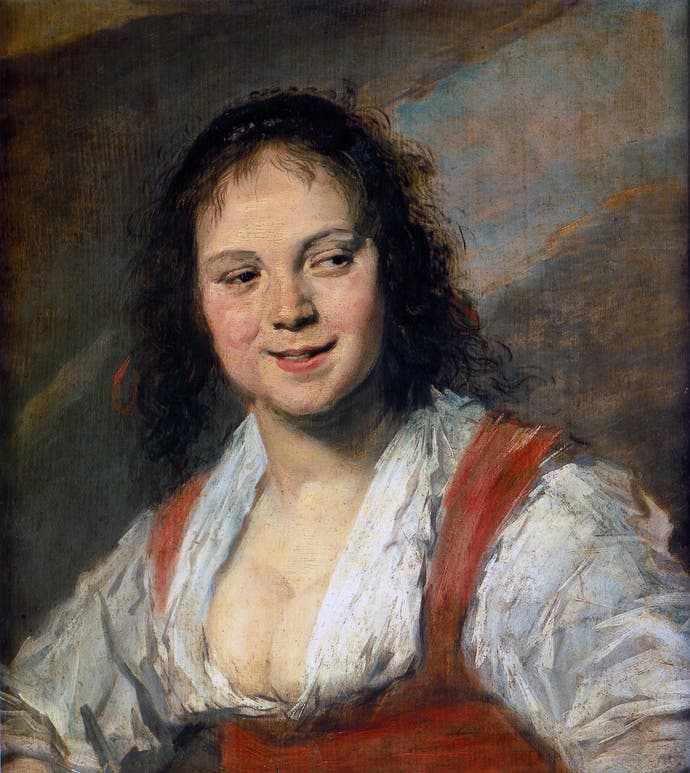
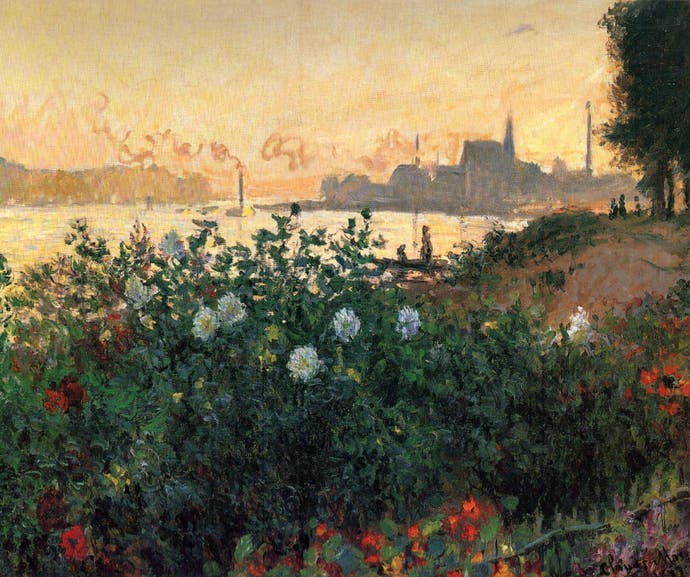
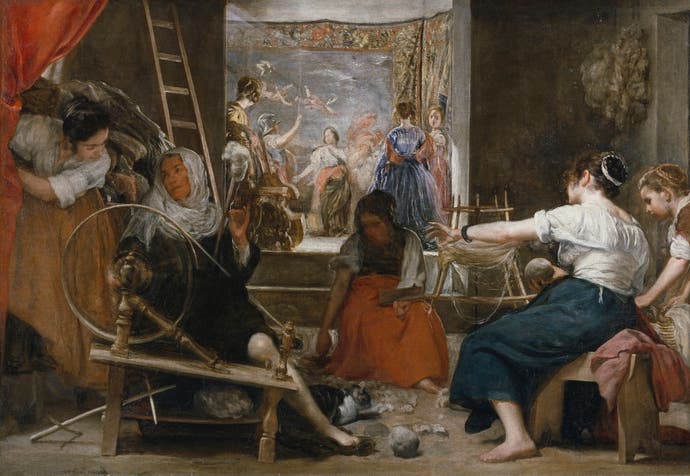
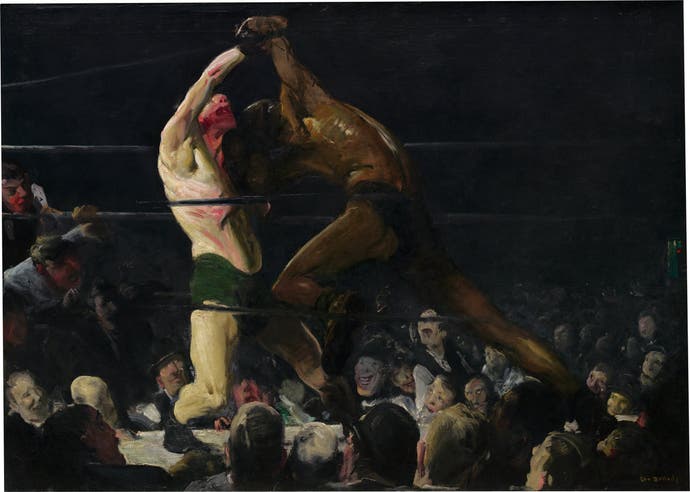
Frans Hals, The Gypsy Girl, 1628; Claude Monet, Argenteuil, Flowers by the Riverbank, 1877; Diego Velazquez (who else m8?), Las Hilendras, 1655; George Bellows, Both Members of This Club,1909
Note how the brushstrokes are clearly visible in each of these paintings, first making us aware of their physicality, but also the artist's. In looking at these dreamlike forms and figures, we can't help but recall the old master who poured their vision onto canvas. A sense of liminality still remains, of these works hovering on the boundary between this realm and the creator's, of fading in and out of existence as we take in each not so detailed detail.
This begs the question, what would it have been like to see these old masters in action? And how were their motions and mannerisms different, or similar, to Bob's?
Watch Bob Ross and it's like we're peering through a window into the old master's workshop, perhaps giving us a glimpse of what Velazquez' or Hals' techniques may have looked like. Through him, we're able to see the machinations of painting, and the skill which goes into crafting a scene. In this way, he's also a catalyst who elevates their work, and makes us truly appreciate their incredible mastery. But above all, he's a gateway for everyone to freely express themselves and enjoy doing so.
I vividly recall a moment where Bob had fluffed some clouds into existence. Afterwards, he turned to the camera and whispered "They live in your fan brush". Sure, we may never reach the dizzying heights of these greats, but he believes our own innate ability is more than enough.
